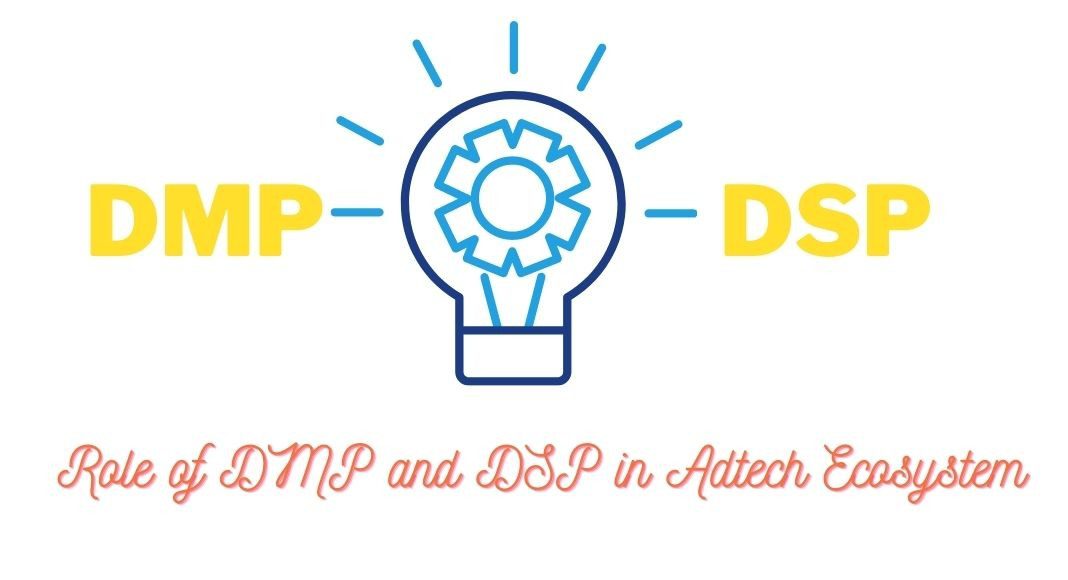It is very important to understand various types of software solutions from the beginning and understand the entire scope of programmatic media solutions. Data management solutions and demand-side platforms are amongst the huge tech units in the programmatic ecosystem. It aims to enhance the data-driven strategy and let you manage all your audience data seamlessly.
So, let’s understand what DSP is?
DSP is a software which allows media advertisers and digital agencies to do real-time bidding (RTB). It provides a centralized buying of ad inventory to display ads to the users in optimal value.
And what is DMP?
Data management is nothing but a user’s data warehouse- software that manages and sorts all kinds of customer data gathered from various sources and platforms. It also has an automated function of audience segmentation where digital advertisers can easily create a highly targeted ad that resonates with all kinds of customer’s needs.
Therefore, DSP and DMP together let you connect the dots and attain easy solutions in your everyday business operations.
Now let’s have a glance at the trends of DSP & DMP
Statista research has revealed that the entire market of Data Management Platform services in Japan is forecasted to reach 11 billion Japanese yen by 2022.
Ad publishers, media buyers, and marketers frequently use data management platforms to get more comprehensive control over the data and turn these insights into actionable and high-value data.
Read Also: Google Workspace (G Suite) vs. Microsoft 365: Full Comparison
Apart from that, the Econsultancy study shows that 68% of digital marketers consider DMP the critical factor to reshape programmatic future. DMPs also aim to link all customer data and store it in a uniform centralized location. As DMPs itself does not perform much without being linked to any other tech solutions. As your audiences are being segmented, you would be able to serve your advertisements with the Demand Side Platform’s help.
A demand-side platform’s primary function is to ease the interactions between the advertisers and publishers and to buy impressions. When a platform is enriched with insights from the data management platform, the demand-side platform automatically decides which impression is better to bid on and target the right people. Apart from that, DSP also consists of an independent entity, a mobile DSP, which is often used by media owners.
Now let’s compare DMP vs. DSP
Demand-side platforms could gather data only from marketing campaigns. Whereas data management platforms can collect data from multiple sources.
Demand-side platforms are software for inventory buyers only. At the same time, data management platforms collect all kinds of first, second, and third-party data. Also, it collects data from Customer relationship management.
Demand-side platforms without DMP connection make use of limited targeting parameters. And DSP needs additional datasets to perform extended audience targeting. At the same time, DMP allows you to access all types of user data and open the gateway of behavioral targeting based on parameters like habits, lifestyle, preferences, etc.
Demand-side platforms store data that could be used in various other digital marketing campaigns, which would help in increasing efficiency. Whereas DMP guarantees a much higher level of consumer data protection and optimizes the audience segment’s further performance. DMP’s user data also belongs to the owners and not shared anywhere, which is why data leakage and fraud risks are minimized.
Now, let’s discuss a few common cases of Demand-side platform.
When you should use a DSP
– For campaign budgeting
Demand-side platforms lessen the wasteful ad spend by real-time bidding on an impression when it matches its optimal defined price.
– For Advanced analytics
A smart demand-side platform will provide you with the analytics considering your campaign’s performance in real-time, which allows you to be more effective in campaign optimization in the future. It also helps you to define and work in a better way.
And when to use DMP?
Well, you make use of a data management platform for the following cases.
– Data collection
You will be able to collect multiple types of data in one place and achieve a 360-degree view of your potential audiences.
-For delivering customized experiences
By accumulating all the customer’s insights, advertisers could optimize their ad campaigns and deliver personalized messages.
– For defining audience segments
According to the audiences, user segments advertisers could diversify ad campaign delivery, such as selecting the audience segments or picking various delivery times.
The future of data-driven programmatic advertising lies in a smart DSP and DMP integration and the right combination, which will lead to better management of digital marketing campaigns.
Read Also: US Files Landmark Lawsuit against Google Over Search





































